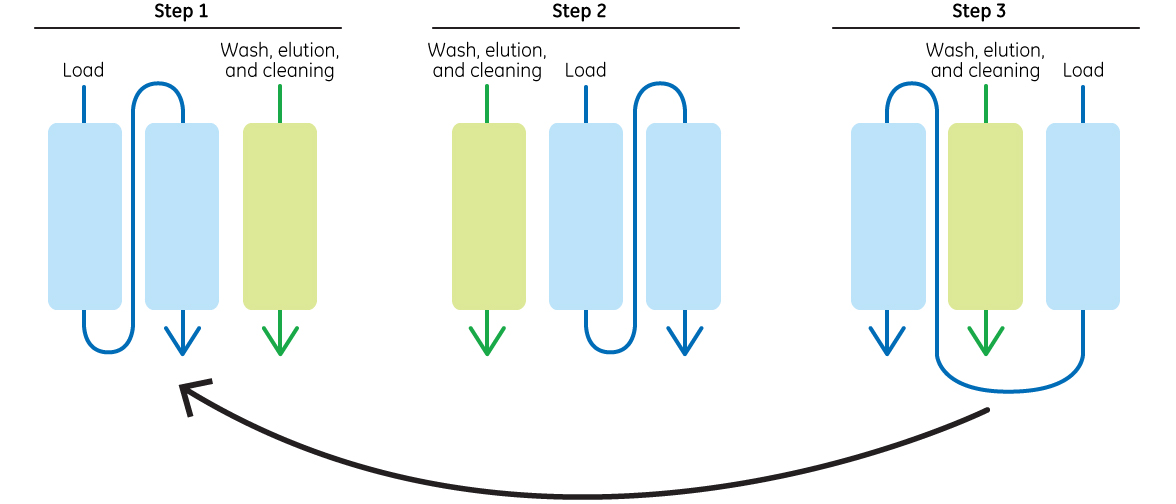You may have heard about process intensification or continuous processing, but what is it? What are the benefits of purifying proteins in this way? And can this new way of purifying your target protein really give you pure protein continuously?
Introducing continuous chromatography
Process intensification
The key benefit is increasing your productivity while reducing cost and effort. Two approaches to process intensification are multi-step purification, also called straight through processing, and continuous chromatography.
Continuous chromatography
With this approach you use three or more columns of the same type simultaneously, instead of using one column as in batch purification. The columns are loaded, washed, eluted, and cleaned in a staggered way. This set up means that your starting sample is being loaded on a column at all times and eluted from another column at repetitive intervals. To achieve continuous chromatography, the purification system needs parallel flows and the ability to switch columns in a timely manner.
The following example uses three columns of the same type. Sample loading takes place over two columns positioned in series. This configuration utilizes the medium capacity to a higher degree than a batch set up, where columns normally are not overloaded. The second column in the loading phase will capture any protein that is breaking through from the first one. While the sample is loading, the third column is being washed, eluted, and cleaned.
As shown in the diagram, when steps 1 to 3 (in this example) have been performed, one cycle is complete. In a continuous process the cycle is repeated again and again for as long as the purification run is needed. When combined with a perfusion reactor, the run can go on for days or weeks. With this set up, the protein is produced in the reactor and is then purified with minimal hold-up time. This speed is often beneficial for protein stability and quality.
Benefits of continuous chromatography:
- Increased productivity
- Consistent product quality
- Reduced equipment size
- Robust process
- Reduced capital and operational costs
In my next post, I will look at multi-step purification as a method for the “lazy” (or “very efficient”) scientist.
If you have any questions or thoughts on continuous chromatography, let me know in the comments section below. Thanks for reading!
